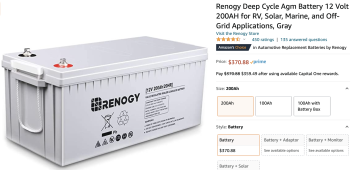I have what may be a dumb question, we built a weekend 1400 sq ft cabin at our remote ranch, as we retire this year we will spend 4 to 5 days a week up there every other week or so....We are 100% off grid solar. I have a MPPT charge controller rated at 60 watts and up to max of 150 volts. I have 16 200 watt 12 volt panels on the first string, these are wired in groups of 2 in series for 24 volt application {we see 40 volts no load} my 8 AGM batteries are wired in series for 24 volts and parallel for amperage.....with a 5000 watt inverter running the house.....Fridge, tv, lights, fans, microwave, etc. We have 3 solar Air Conditioner/Heat pumps in, but those are 100% powered by independent solar panels, charge controller and batteries for each AC system.
So now to my question.....I am currently mounting another 16 solar panels again 12 volt panels at 200 watts. This will tie into a second matching charge controller rated at max of 150 volts and 60 amps. Would it be more beneficial to wire my solar panels up in say groups of 4 in series for basically a 48 volt charging system {no load voltage would be between 74 to 80 volts} or would it be better to wire it the same way as the first one with no load volt around 40}.
I want to do what will create the most efficient and beneficial charge to the batteries as possible, while supporting the load. Which would be better and why?
My original design was just two charge controllers and 2 sets of 16 panels for 24 volt type system. But a friend has been saying the higher voltage will be better????
So now to my question.....I am currently mounting another 16 solar panels again 12 volt panels at 200 watts. This will tie into a second matching charge controller rated at max of 150 volts and 60 amps. Would it be more beneficial to wire my solar panels up in say groups of 4 in series for basically a 48 volt charging system {no load voltage would be between 74 to 80 volts} or would it be better to wire it the same way as the first one with no load volt around 40}.
I want to do what will create the most efficient and beneficial charge to the batteries as possible, while supporting the load. Which would be better and why?
My original design was just two charge controllers and 2 sets of 16 panels for 24 volt type system. But a friend has been saying the higher voltage will be better????




